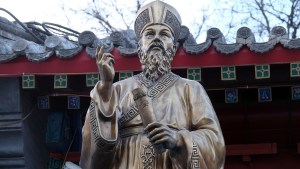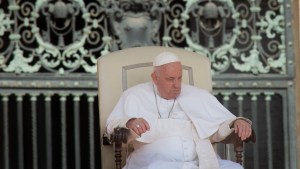Ties between Catholic priests and China go back to at least 1582. That’s when Matteo Ricci, a Jesuit priest from the Papal States, traveled from Portugal to China and became a key figure in the relationship between Europe and China.
Ricci, who was declared “Venerable” in 2022, is known for being the first Westerner to ever be allowed into Beijing’s Forbidden City, for creating the first Portuguese-Chinese dictionary and for drawing the first Western-style world map made with Chinese characters. He also led the way for other priests to come and spread the Catholic message to the country.
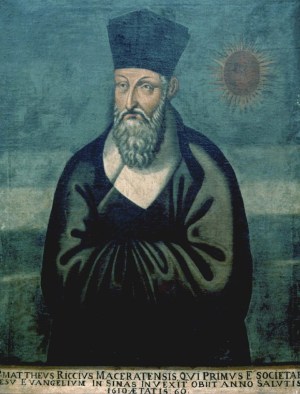
By the 18th century a dedicated school for Chinese missionaries, the “Chinese College” or “Collegio dei Cinesi,” was established in Naples, Italy, to train Chinese students who wanted to become priests. One of these pupils ended up living an adventurous life as a missionary in his native China.
Pietro Zai was born as Cai Ruoxiang, in Fujian, China, in 1739. As detailed in an article by Eugenio Menegon, published in Journal of Modern Italian Studies, Zai had completed his studies in Naples between 1761-1767. In 1767 he was examined by a commission led by Pope Clement III and authorized to go back to China as an Apostolic Missionary.
Zai returned to China to spread Catholicism among increasingly interested Chinese people, but in the 18th century, life for Catholic priests in China became much more difficult. Emperor Qianlong, the fifth emperor of the Qing dynasty, who ruled over the Chinese empire between 1735 and 1796, launched an empire-wide anti-Christian campaign to contain the development of a religion seen as a threat to Chinese culture.
An imperial decree from 1724 had already outlawed Catholicism in China, leading to the arrest of several prominent Franciscan missionaries. By the time Qianlong took power in 1735, Pietro Zai, who was the number one person on the list of “wanted criminals,” had not yet been captured. Emperor Qianlong launched a campaign to find Zai and urged governors across Chinese provinces, especially in the provinces of Guangdong, Fujian and Huguang, to find the Catholic priest.
As Menegon explains, in 1784, after some relatively peaceful years in Huguang and other provinces, Zai showed up on the radar of Chinese authorities after helping four Franciscan priests travel to the provinces of Shanxi and Shaanxi. The four men were caught and arrested, and it was reported that someone under the Chinese name of Cai Ruoxiang helped organize the trip. Guangdong authorities immediately ordered his arrest.
Zai managed to find refuge in the house of a Christian pharmacist in Canton, and then traveled to Macau, a Portuguese colony, where he found shelter at a Franciscan convent.
Zai’s escape to Macau did not stop the hunt, however, as Chinese authorities sent representatives to Macau asking for his immediate arrest. At first, the Portuguese rulers of Macau said they were not aware of Zai’s presence in their territory, but in response, China escalated the hunt and placed an embargo on Macau. Portuguese authorities would later relent and order the raid of all Christian monasteries on their territory.
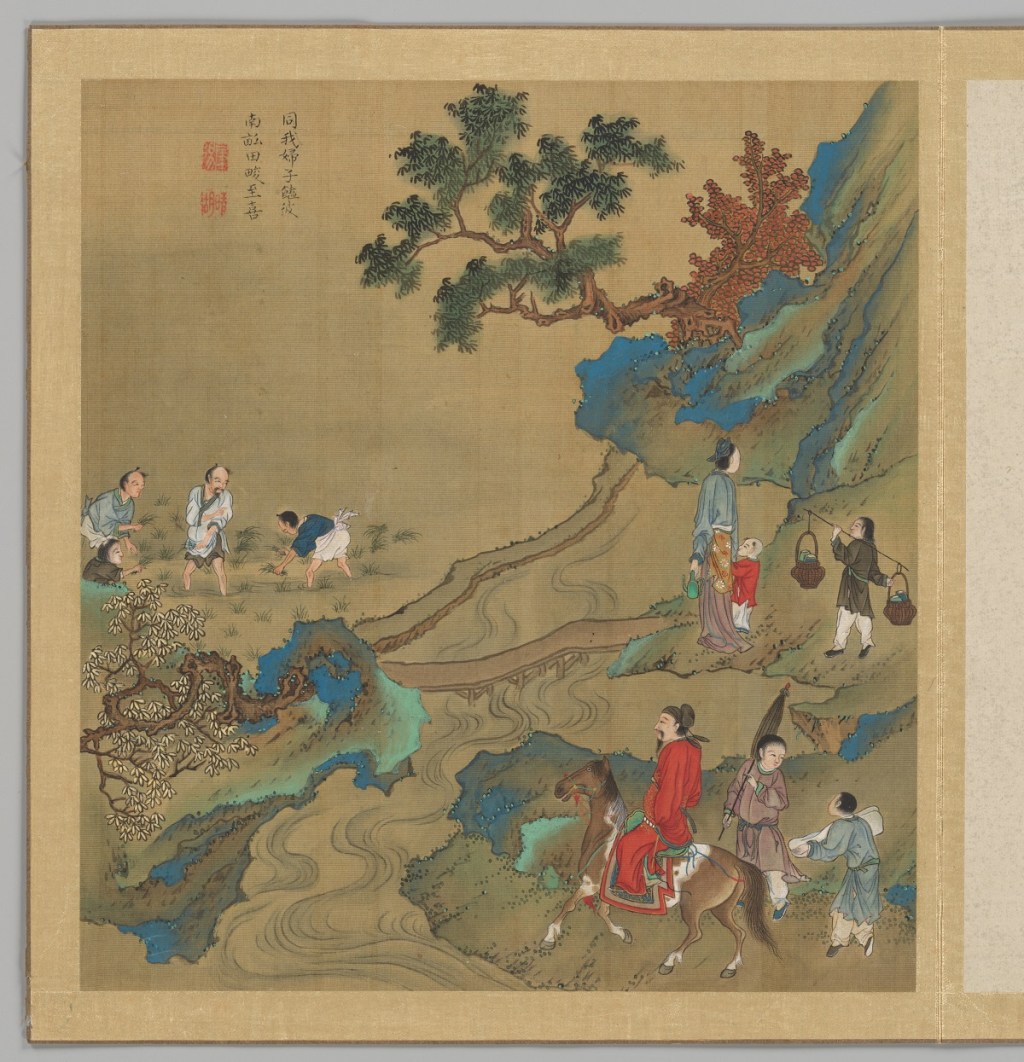
In November of 1784, Chinese authorities were still on the hunt for Zai, who managed to escape to Goa, another Portuguese colony in what is now India. For his safety he had taken on the fake name of Giovanni Maria Ly.
In the meantime, Portuguese authorities banned Zai from traveling in their outposts in order to comply with Chinese requests. Zai was also banned from traveling to Spain-controlled territories like the Philippines. Pietro Zai was effectively “stranded” in Goa. In 1785, after a last man hunt in Macau, the Chinese authorities classified Zai as “disappeared.”
Zai remained in touch with his superiors in Rome and his teachers in Naples, but now signed his letters with the name Giovanni Maria Ly. This, Menegon explains, has led scholars to believe they were two different people, and that Pietro Zai and Giovanni Maria Ly were both writing letters from Asia during the 18th century.
During his time in Goa, Zai met Apostolic Vicar of Siam Monsignor Arnaud-Antoine Garnault, and traveled with him to Kerala, a Dutch territory south of Goa, and then Pondicherry, a French territory in southwest India. From there, Zai wanted to leave for China or the Philippines, but found it hard because of travel bans leveled against him.
The two clergymen made it to Penang, in Malaysia, then to Malacca, Java, and Batavia. Here, Zai was finally able to make connections with Chinese immigrants from Fujian, who helped arrange for his illegal travel back home.
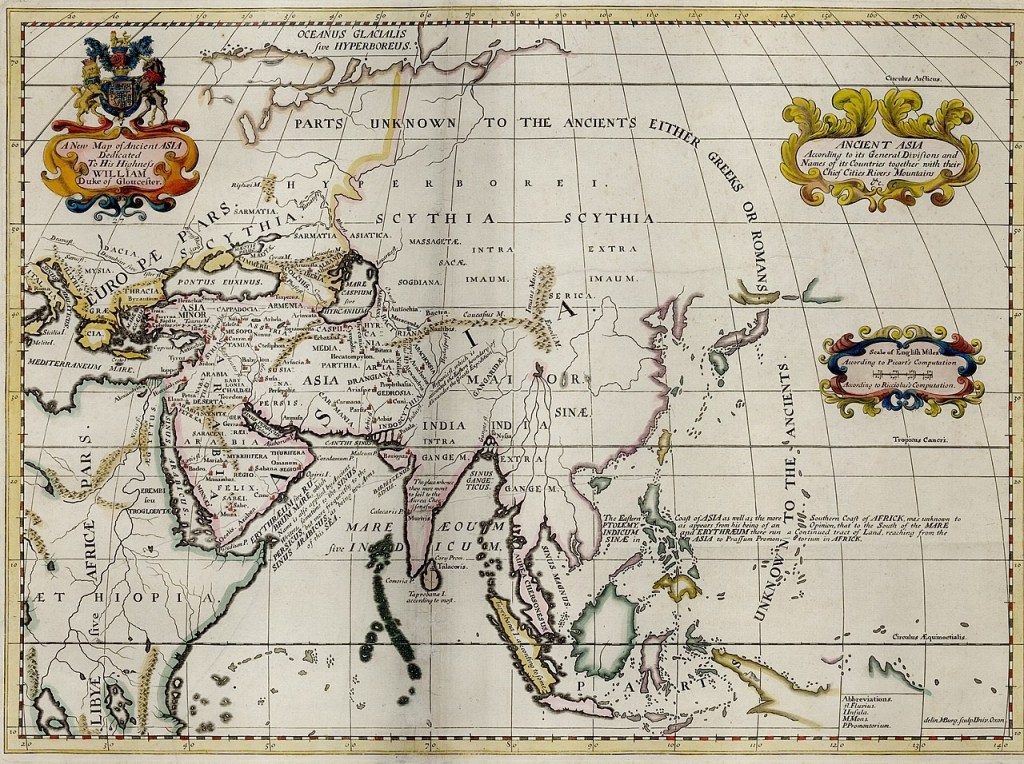
According to letters consulted by Menegon, Zai was back in China in 1788. Despite being the number one “most wanted” man in the Chinese Empire, he had finally made it back home. In 1789, he wrote to Naples saying that his mission numbered 6,000 Christians and that they needed a new priest from Italy to meet the increasing demand of the mission. Zai finally died in 1806, in Canton, after a turbulent yet effective career as a Catholic missionary. His spy-movie-like life embodies the dedication of the many men and women that to this day travel the world to spread the Catholic message.
This article is based on the letters studied by Eugenio Mengon in his article “Wanted: an Eighteenth Century Chinese Catholic Priest in Italy, China, India and South Easy Asia” published in Journal of Modern Italian Studies 15 (4) 2010: 502-518

